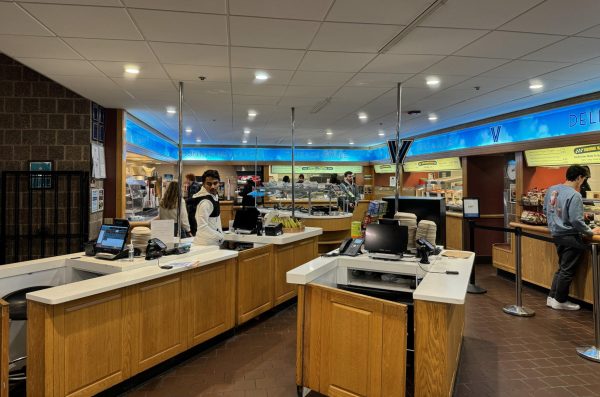Alumni War Journal
April 3, 2003
Peering out from the pages of the Sept. 7, 1990 edition of the Villanovan, the cartoon frat boy only has one question.
Clenching a beer, he asks, “Wait … isn’t Iraq that new fraternity on campus?”
The comic, which ran beside an article that called the young Americans of the early 1990s the least globally aware generation in decades, succinctly captures the campus reaction to Iraq as remembered by Shannon Mitchell ’92.
“I don’t really remember any change on campus,” Mitchell, who majored in English and now is a member of the University’s Board of Directors, says.
The distant war probably pervaded Mitchell’s thoughts more often than her peers because the U.S. military had always been an integral part of her life. “My father was in the military, so I’m not really from anywhere,” she says. “We moved every two or three years.”
At the time of the Gulf War, Mitchell’s father was serving as the commanding officer of a Navy base in Maine. While her father’s main concern was maintaining security at the base, she remembers worrying about his own safety. “I can just remember talking on the phone to my mom about the increased security on base,” she says.
What she doesn’t remember, though, is any dynamic displays of war protest or support on campus. In fact, Mitchell recalls, the war was not even a cause for debate in her classes.
Mitchell attributes the general apathy of Villanovans to the brevity of the battle and, of course, the traditional conservative Republican nature of the school. “It was over so quickly,” she says. “I just don’t know if it really entered people’s consciousness.”
Issues of The Villanovan from the time hint at the naivete of the students. A weekly feature entitled “Beyond the Main Line” summed up developments in the Middle East. The newspaper also featured a University-sponsored forum on Iraq-Kuwait relations and chronicled the journey of a professor to Jordan.
The 1991 Belle Air Yearbook, however, paints a picture of patriotism and consciousness. Signs with messages for U.S. troops at sporting events and peace signs painted on the windows of Stanford Hall adorn the pages of the yearbook.
Still, these were mere flickers of recognition from a group of Americans that were more heavily involved in the Gulf War than they may have realized. At the time, over 579,000 college students were enlisted in the U.S. Army Reserves, comprising 61 percent of the reserve forces.
Mitchell does have one clear Gulf War memory, however. “The war was over on my 21st birthday, and I can remember being in Kelly’s and watching it on CNN,” she says, laughing.
In the Middle East, celebrations of peace were taking place. But to the students of Villanova, even at its end, the war was still far away.










